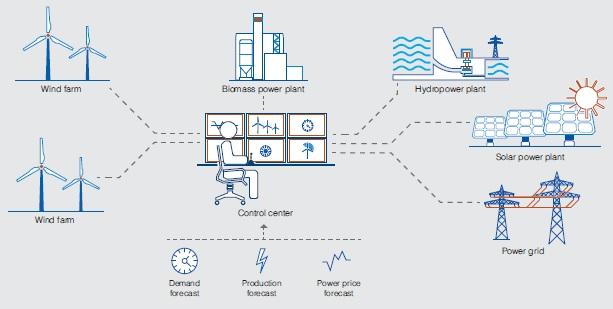Report on Energy-Efficient NPU Technology and its Alignment with Sustainable Development Goals
Introduction
A research team at the Korea Advanced Institute of Science and Technology (KAIST), in collaboration with HyperAccel Inc., has developed a novel energy-efficient Neural Processing Unit (NPU) technology. This innovation addresses the critical energy and hardware demands of large-scale generative AI models. The technology demonstrates significant performance enhancements while substantially reducing power consumption, positioning it as a key contributor to achieving several United Nations Sustainable Development Goals (SDGs), particularly those related to energy, infrastructure, and climate action.
Performance Metrics and Sustainability Impact
Controlled laboratory testing reveals that the specialized AI chip delivers considerable improvements over current Graphics Processing Unit (GPU) based systems. These results highlight a direct contribution to sustainable operational practices in the technology sector.
- Performance Increase: AI models operated 60% faster.
- Energy Reduction: The NPU utilized 44% less electricity.
This dual achievement of enhancing computational speed while lowering energy use presents a viable path toward more sustainable AI infrastructure, directly supporting SDG 7 (Affordable and Clean Energy) and SDG 13 (Climate Action) by reducing the carbon footprint of data centers.
Technical Innovation Analysis
Addressing the Memory Bottleneck
The core of the innovation is its solution to the memory bottleneck issue that constrains current AI systems. The research, detailed in the paper “Oaken: Fast and Efficient LLM Serving with Online-Offline Hybrid KV Cache Quantization,” focuses on KV cache quantization, which is responsible for the majority of memory usage in generative AI. By optimizing this process, the technology enables high-level AI performance with fewer hardware devices, promoting resource efficiency in line with SDG 12 (Responsible Consumption and Production).
Architectural Advancements
The NPU’s architecture is built upon a sophisticated algorithm and hardware co-design to maximize efficiency without requiring modifications to existing NPU operational logic. This facilitates easier integration and adoption, crucial for advancing SDG 9 (Industry, Innovation, and Infrastructure).
- Quantization Algorithm: A three-pronged approach is employed, consisting of threshold-based online-offline hybrid quantization, group-shift quantization, and fused dense-and-sparse encoding. This minimizes accuracy loss while reducing memory requirements.
- Memory Management: The hardware incorporates page-level memory management techniques for the efficient use of limited memory bandwidth and capacity.
- Optimized Encoding: New encoding techniques were developed specifically for the quantized KV cache, addressing the unique demands of the system.
Alignment with Sustainable Development Goals (SDGs)
The development of this energy-efficient NPU technology represents a significant advancement for sustainable AI. Its widespread adoption could substantially mitigate the environmental impact of the rapidly growing AI industry.
- SDG 7 (Affordable and Clean Energy): By consuming 44% less power, the technology promotes energy efficiency on a large scale, making AI computation more sustainable.
- SDG 9 (Industry, Innovation, and Infrastructure): The research provides a foundational technology for building resilient, high-performance, and sustainable digital infrastructure capable of supporting the next generation of AI.
- SDG 12 (Responsible Consumption and Production): The ability to achieve greater performance with fewer NPU devices compared to GPU-based systems encourages more responsible consumption patterns for hardware and energy resources.
- SDG 13 (Climate Action): A significant reduction in the energy consumption of AI cloud services and data centers directly translates to a lower carbon footprint, contributing to global climate action targets.
Industry Context and Future Outlook
This technological breakthrough arrives as the AI industry confronts mounting pressure to reconcile performance demands with sustainability objectives. The current market’s reliance on power-intensive GPUs has led to supply chain challenges and high operational costs. Professor Jongse Park of KAIST noted that this NPU technology demonstrates the feasibility of high-performance, low-power infrastructure specialized for generative AI. It is poised to play a critical role not only in AI cloud data centers but also in the broader AI transformation (AX) environment. The innovation offers a tangible solution for a more sustainable future in artificial intelligence, aligning industrial progress with global sustainability imperatives.
Which SDGs are addressed or connected to the issues highlighted in the article?
-
SDG 7: Affordable and Clean Energy
The article focuses on the development of an energy-efficient NPU that uses “44% less electricity” than current technologies. This directly addresses the goal of improving energy efficiency.
-
SDG 9: Industry, Innovation and Infrastructure
The research represents a significant technological innovation aimed at making AI infrastructure more sustainable. The article states the technology can “upgrade infrastructure and retrofit industries to make them sustainable” by creating “high-performance, low-power infrastructure specialised for generative AI.”
-
SDG 12: Responsible Consumption and Production
By reducing energy and hardware requirements, the technology promotes more sustainable consumption and production patterns in the tech industry. The article notes the innovation enables the “same level of AI infrastructure performance using fewer NPU devices,” which contributes to the efficient use of resources.
-
SDG 13: Climate Action
The reduction in energy consumption has direct implications for climate action. The article highlights that widespread adoption of the technology “could significantly reduce the carbon footprint of AI cloud services,” thereby mitigating the environmental impact of the growing AI industry.
What specific targets under those SDGs can be identified based on the article’s content?
-
SDG 7: Affordable and Clean Energy
- Target 7.3: By 2030, double the global rate of improvement in energy efficiency.
Explanation: The article’s central theme is the development of a technology that is significantly more energy-efficient. The new NPU “ran AI models 60% faster while using 44% less electricity,” which is a direct contribution to improving energy efficiency in the rapidly growing AI sector.
- Target 7.3: By 2030, double the global rate of improvement in energy efficiency.
-
SDG 9: Industry, Innovation and Infrastructure
- Target 9.4: By 2030, upgrade infrastructure and retrofit industries to make them sustainable, with increased resource-use efficiency and greater adoption of clean and environmentally sound technologies and industrial processes.
Explanation: The energy-efficient NPU is presented as a “clean and environmentally sound technology” designed to upgrade AI infrastructure. The article states it offers a “potential path toward more sustainable AI operations” and can solve the “enormous energy and hardware requirements of large-scale generative AI models,” directly aligning with the goal of making infrastructure sustainable and resource-efficient.
- Target 9.4: By 2030, upgrade infrastructure and retrofit industries to make them sustainable, with increased resource-use efficiency and greater adoption of clean and environmentally sound technologies and industrial processes.
-
SDG 12: Responsible Consumption and Production
- Target 12.2: By 2030, achieve the sustainable management and efficient use of natural resources.
Explanation: The technology promotes the efficient use of natural resources, specifically energy and the materials used for hardware. The article mentions that the NPU’s efficiency enables the “same level of AI infrastructure performance using fewer NPU devices,” which addresses the efficient use of both energy and material resources.
- Target 12.2: By 2030, achieve the sustainable management and efficient use of natural resources.
-
SDG 13: Climate Action
- Target 13.2: Integrate climate change measures into national policies, strategies and planning.
Explanation: While not a national policy itself, the technology is a solution that can be integrated into corporate and industry-level strategies to combat climate change. The article explicitly discusses the “sustainability implications” and how the technology’s lower power consumption could “significantly reduce the carbon footprint of AI cloud services,” which is a key measure for climate action within the industry.
- Target 13.2: Integrate climate change measures into national policies, strategies and planning.
Are there any indicators mentioned or implied in the article that can be used to measure progress towards the identified targets?
-
For Target 7.3 (Improve energy efficiency):
- Indicator: Improvement in energy efficiency.
Data from article: The article provides a direct quantitative measure: the new NPU technology uses “44% less electricity” compared to current GPU solutions for equivalent tasks. This percentage serves as a direct indicator of improved energy efficiency.
- Indicator: Improvement in energy efficiency.
-
For Target 9.4 (Sustainable infrastructure and technology):
- Indicator: Reduction in carbon footprint/CO2 emissions from infrastructure.
Data from article: The article implies this indicator by stating that the technology’s lower power consumption could “significantly reduce the carbon footprint of AI cloud services.” Measuring the reduction in energy consumption (44%) is a proxy for measuring the reduction in CO2 emissions.
- Indicator: Reduction in carbon footprint/CO2 emissions from infrastructure.
-
For Target 12.2 (Efficient use of natural resources):
- Indicator: Reduction in material consumption for infrastructure.
Data from article: The article implies this by stating the technology “enables the same level of AI infrastructure performance using fewer NPU devices compared to traditional GPU-based systems.” A reduction in the number of physical devices required is a direct measure of more efficient material resource use.
- Indicator: Reduction in material consumption for infrastructure.
SDGs, Targets and Indicators Table
| SDGs | Targets | Indicators (Mentioned or Implied in the Article) |
|---|---|---|
| SDG 7: Affordable and Clean Energy | 7.3: Double the global rate of improvement in energy efficiency. | A 44% reduction in electricity usage compared to current GPU solutions. |
| SDG 9: Industry, Innovation and Infrastructure | 9.4: Upgrade infrastructure and retrofit industries to make them sustainable and increase resource-use efficiency. | Development of “high-performance, low-power infrastructure” that could “significantly reduce the carbon footprint of AI cloud services.” |
| SDG 12: Responsible Consumption and Production | 12.2: Achieve the sustainable management and efficient use of natural resources. | Achieving the same performance with “fewer NPU devices,” indicating more efficient use of material resources. |
| SDG 13: Climate Action | 13.2: Integrate climate change measures into policies and strategies. | The technology offers a solution to reduce the “carbon footprint of AI cloud services,” representing a technological strategy for climate action in the AI industry. |
Source: cloudcomputing-news.net







